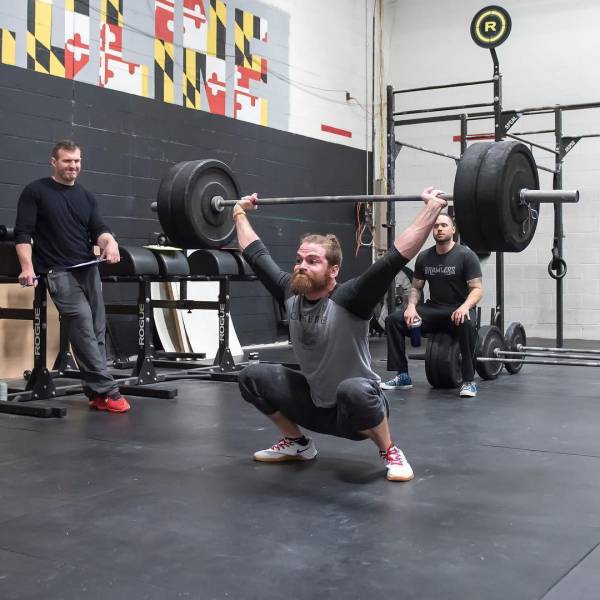The warm-up is arguably the most important aspect of any fitness routine. A proper warm-up primes your nervous system and readies your circulatory and muscular systems for the workout ahead. The benefits of an effective warm-up do not to be reiterated here; instead, a simple recipe will be laid out for you to immediately implement into your training. Like baking a good cake, the base elements you need are consistent across the board but how you implement them widely varies.
An ideal warm-up can routinely be completed in about 10-20 minutes, depending on the movements in your workout that day. A perfect warm-up should always include the following elements:
- Wake-Up (3-5 minutes)
- Loosen-Up (5-7 minutes)
- Fire-Up (5-7 minutes)
I would like to note that older athletes (35+), those that have noticeable movement deficiencies, or someone with a known injury should add an additional 5-10 minutes of targeted mobility work to his or her regimen.
The Wake-Up
Start each workout session with some low-level, steady-state cardio. Minimum effective dose here is about 3-5 minutes. You need to get your tissues moving and heart rate up since many of us are walking into the gym after a night of sleep or a full day of work. Choose whatever you’d like: run, row, bike, ski, or jump rope. Whatever it is, just make sure you have a light sweat going when you’re done.
Time to Loosen Up
Now that you have a light sweat going, it is time to address your mobility. I’m a huge fan of the KISS principle (Keep It Simple, Stupid) when it comes to anything in the fitness realm. Choose 1-2 body parts that will be primarily utilized during your workout. Here is a (super) quick reference:
- Upper body pressing: chest, triceps, and thoracic spine
- Upper body pulling: lats, t-spine, biceps, and forearms
- Lower body squatting: glutes, quads, ankles (really anything lower body)
- Lower body pulling: glutes and hamstrings
If you are anything like me, you probably feel like you need help in all those areas. Remember, consistency is key; don’t try to do everything all at once. I always keep the focus on my biggest problem areas in every warm up (glutes and chest) and then rotate the secondary areas at each session.
The prescription is, again, very simple. Stretch each area for 1 minute on each side or 2 minutes total if it is a bilateral movement. I usually do each stretch twice through, which puts me at 8 minutes total.
Fire Up the Engine
The final part of your warm-up is where you begin to add in the movements that you’ll be completing in your workout. This is completed in two phases. First, use slow and controlled movements with little to no weight. Second, implement fast lifts with moderate weight, between 30-50% of your 1 rep max.
The slow and controlled reps should be done with no more than an empty barbell, and I would generally recommend most people keep their first few lifts un-weighted. You want to move at a pace in which you can complete the exercise with perfect form. As Coach Burgener says: “Practice makes permanent.” Athletes with mobility issues should alter the movement so that they can perform it perfectly; for example, you can place something under your feet to raise your heels for squats.
We are in the homestretch of your warm up and now it is time to add some speed to your movements. Keep the weight light in relation to the workout ahead. Your focus should remain on proper form but your movements should be crisp and snappy. Squats should be fast out of the hole, pulls should finish quick, and presses should have a strong lockout. No more than 2-5 reps should be used to ensure top speed is maintained.

All in all, this portion of the warm-up should take 5-8 minutes. This may fluctuate depending on your urgency of movement. If pressed for time, I would structure the “fire-up” portion in an EMOM (Every Minute On the Minute) structure.
Bringing It All Together
When it comes to warm-ups, there is an unlimited number of movements and ways of implementation. The key is to start simple and find what works for you. Don’t concern yourself with “neural pathway priming” and “CNS activation.” Break a light sweat, stretch, and work on perfecting your mechanics in every movement. Everything else you may read about is a micro-iteration of those fundamentals.






